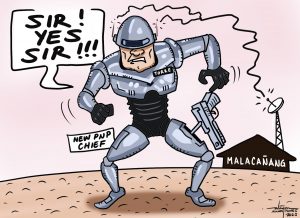If we did not have the Kadayawan Festival when I was a young girl growing up in the urban center of Davao City, I would never know about our rich cultural heritage and indigenous tribes because such lessons were not included in my colonial-influenced formal education.
My first experience of what is now Kadayawan was the Apo Duwaling Festival in 1986, when I was 16 years old and just finishing high school. My old neighborhood was in Barangay 9-A, which is part of the city’s Poblacion district, and very near the PTA grounds or what is now the People’s Park. The Apo Duwaling was held in the PTA grounds back in the day.
I would wake up to the sounds of drums, agong and kulintang as musicians on board a huge truck would go around the city’s neighborhoods to wake people up to prepare for the festival. It was a ritual called “Pamukaw” and it got everyone excited to go to the festival grounds.
For a city girl, experiencing that social ritual that has been practiced by our indigenous ancestors connected me to a time when communal celebrations are an integral part of everyday life.
It must be noted that just a few years ago, Davaoeños could not go out to gather and celebrate in the 70s and early 80s. The city then was known as the “killing fields of Asia” and the sounds children woke up to at dawn were that of strafing of bullets from machine guns.
We were under martial law from when I was two years old until high school. We had no junior-senior proms. No parties. Only checkpoints and curfews. So waking up to festive kulintangan and being called to gather outside to celebrate was a strange but exciting thing for a teenager then.
There at the PTA grounds we would see the Agri-Industrial Fair — a showcase of Davao’s bountiful harvests of fruits and vegetables and a blooming horticulture industry dominated by beautiful orchids. Our waling-waling, the queen of Philippine orchids, was the main attraction at the fair, closely followed by our native durian, the king of fruits.
The festival would open with an ecumenical thanksgiving service, inclusive of all faiths. This was followed by the presentation of the “Biya-neng” of each indigenous tribe. Biya-neng in Philippine indigenous culture is more than just a tribe’s muse. She is celebrated for her role as a tribal leader and for her contributions to the preservation of indigenous culture. So, no, she is not the equivalent of the western beauty queen.
Apo Duwaling, from which today’s Kadayawan originated, was a communal celebration of diverse Davaoeños taking back their city and rebuilding it together from the destruction caused by violent conflict of the martial law years.
It is Davao’s way of reasserting its nonviolent way of life practiced by its indigenous tribes. It is embracing being “indigenized” — as opposed to being “colonized” — and promoting a multicultural and cosmopolitan lifestyle. It is advocating for sustainable development that is rooted in indigenous ways of equitable sharing of the community’s bountiful harvest and being responsible stewards of the planet. It is supporting local enterprises and patronizing local products.
Apo Duwaling and Kadayawan will always represent the best of the Davaoeño spirit of cooperation and inclusiveness. This festival is a testament to how a city that was divided by violence can transform itself and now uniting for peace.
The agri-industrial fair’s main message is that Davao is our country’s food basket, home to diverse flora and fauna. When we stop the violence, we are productive and we can solve many social problems constructively. It also cultivates the spirit of abundance and generosity. There is enough for everyone if we all share.
Being “la-og” (greedy) is not a Davaoeño trait. That is why we are always among the first responders to any disaster or calamity anywhere in the country. We share our resources to those in need and it is a collective action of the people of Davao.
Our “Biya-neng” — now our “Hiyas sa Kadayawan” (festival gem) — was not and is not, and never intended to be, a beauty contest. They are symbols of indigenous pride and cultural resilience. They are being celebrated for their indigenous knowledge and wisdom, their commitment to preserve and cultivate their indigenous heritage, and their ability to practice their indigenous rituals and way of life.
Women in Davao are treated as equal partners of men in peace and development. We believe our beauty is our diversity so it is ridiculous for us to declare any one person as the “beauty queen.” We are all beautiful in different ways and physical beauty is the least valuable quality in our community. Courage, compassion, and the capacity to act for the common good are more valued here.
Celebrating Kadayawan Festival is first and foremost for the people of Davao. Attracting visitors to promote the local tourism industry is but a secondary goal. The festival is an annual reminder of our cherished community values of cooperation, inclusiveness, generosity, gratitude, stewardship, multicultural heritage, social cohesion and peace. These are the values we hope our visitors will be infected with and embrace when they come to celebrate with us.
Kadayawan means a celebration of everything good, valuable, superior, and beautiful. As we celebrate the festival this year, I hope the new generation of Davaoeños will know why we are doing this and why keep doing this every year since 1986.
Innovation in the celebration is good for as long we do not lose sight of the “why” we are having this festival. It is about fostering our multicultural identity and promoting community cohesion as well as nurturing a culture of nonviolence and peace.

